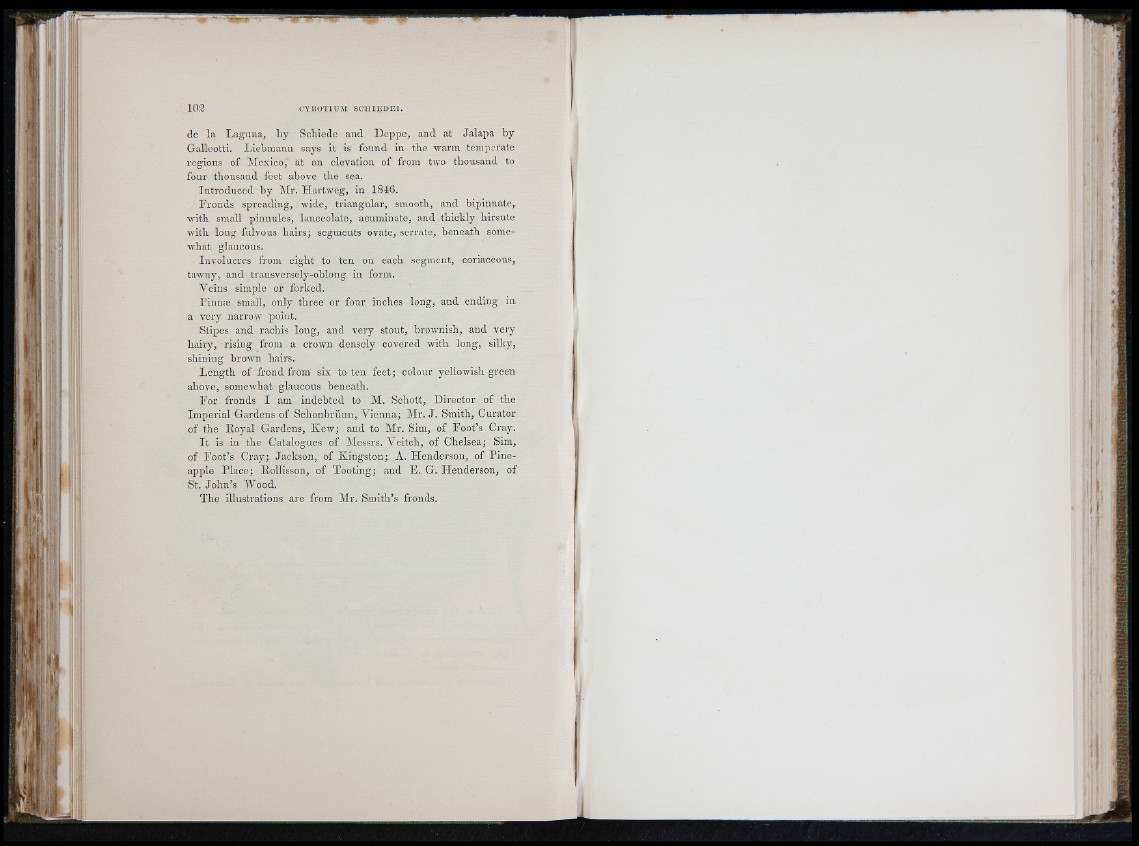
i :
de la L ag u n a , b y Sehiede and D ep p e , and at Ja lap a by
Galleotti. I.iebmann says it is found in tb e warm temiperate
regions of Mexico, at an elevation of from two thousand to
four thousand feet above tb e sea.
In tro d u c e d by Mr. H a rtw eg , in 1846.
F ro n d s spreading, wide, tria n g u la r, smooth, and bip in n a te ,
w ith small p innules, lanceolate, acuminate, and thickly h irsu te
w ith long fulvous h a irs; segments ovate, se rrate, b en e a th somewhat
glaucous.
Involucres from e ig h t to ten on each segment, coriaceous,
tawny, and transversely-oblong in form.
Veins simple or forked.
Pinme small, only th re e or four inches long, and ending in
a v e ry na rrow point.
Stipes and rachis long, and v ery sto u t, brownish, and very
h a iry , risin g from a crown densely covered with long, silky,
shining brown bairs.
L e n g th of fro n d from six to ten fe e t; colour yellowish green
above, somewhat glaucous beneath.
F o r fronds I am in d eb ted to M. Schott, D ire c to r of th e
Im p e ria l Gardens of S ch o n b ru n n , V ien n a ; Mr. J . Smith, Cura to r
o f th e Roya l Gardens, K ew ; and to M r. Sim, of F o o t’s Cray.
I t is in th e Catalogues of Messrs. V e itch , of Chelsea; Sim,
of F o o t’s Cray ; Ja ckson, of K in g sto n ; A. H en d e rso n , of P in e apple
P la c e ; Rollisson, of T oo tin g ; and E . G. H en d e rso n , of
St. Jo h n ’s Wood.
T h e illustrations are from Mr. Smith’s fronds.
i L
i ' l '
r
1 iU
si